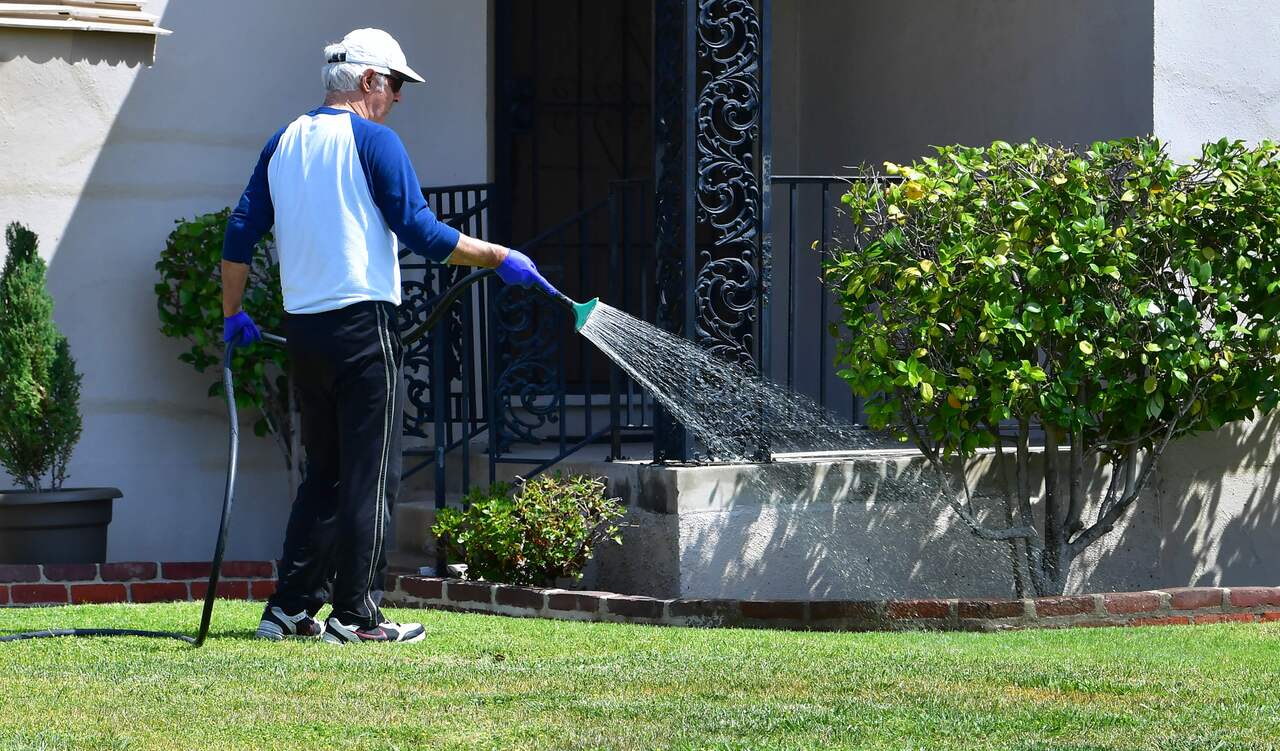Unprecedented water curbs kick in for drought-hit Los Angeles
Sign up now: Get ST's newsletters delivered to your inbox

The new measures limit watering gardens to one day a week and only during the coolest hours.
PHOTO: AFP
Follow topic:
LOS ANGELES (AFP) - Unprecedented restrictions on water usage went into effect Wednesday (June 1) in the Los Angeles area, which like most of California is in the grip of severe drought for the third consecutive year.
More than six million customers are affected by the new measures, which limit watering gardens to one day a week and only during the coolest hours, under penalty of a fine and reduced water flow.
The goal is to reduce consumption by 35 per cent in the area served by the Metropolitan Water District (MWD) of southern California, which encompasses 19 million residents, or nearly half of the US state's population.
"We have not had the supply to meet the normal demand that we have, and now we need to prioritise between watering our lawns and having water for our children and our grandchildren and livelihood and health," the MWD said in an April statement announcing the restrictions.
The district, which acts on behalf of 26 local agencies, depends for its water supply on resources located hundreds of miles away.
Nearly a third comes from northern California via the State Water Project, a colossal network of 21 dams and more than 1,000 miles (1,600km) of canals and pipes that carry water south from the mountains of the Sierra Nevada.
Due to chronic drought exacerbated by climate change, the State Water Project announced it could meet only five percent of its usual deliveries this year to MWD, which had no choice but to take the drastic new measures.
Rather than limiting watering to once per week, district agencies also have the option of reducing water consumption to about 80 gallons (300 litres) per day per person.
That was the option chosen by the city of Los Angeles, where watering is now restricted to two days per week.
According to experts, water used for irrigation accounts for 70-80 per cent of urban consumption in southern California.
"If we shift toward plants and landscapes that are more appropriate toward California climate, we could dramatically reduce our water use," said Ms Heather Cooley, director of research at the Pacific Institute, a think tank on water issues.
Many homeowners had already made this choice during a 2012-2016 drought, when the governor of California imposed a 25 per cent reduction in urban water consumption.
With climate change, "the American cliche of the green lawn with a white fence should not exist in California anymore," said Mr Javier, a gardener AFP met on an LA street unloading succulents in front of a client's house.
"Now it needs to be succulent plants and heat resistant vegetation," he said.
"More and more people are asking for that. They prefer to have a nice front lawn with healthy low water plants and native plants, like succulents and cacti, rather than dirty brown grass," he added.
According to the US Drought Observatory's weekly bulletin, more than 97 per cent of California was in "severe, extreme or exceptional" drought conditions on Wednesday.
And many dams and water reservoirs are at levels well below normal, even before the start of summer.
The Colorado River, another major water source for southern California and used by tens of millions of people in the American West, is also badly affected.
According to a 2020 study published by the US Geological Survey, the flow of the Colorado has dropped by an average of 20 per cent over the past century, and at least half of that decline can be attributed to rising temperatures.
In California, average summer temperatures are 1.6 deg C above their level at the end of the 19th century.

